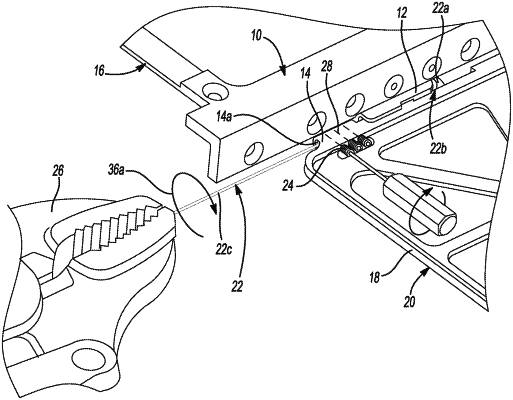| CPC F16C 11/12 (2013.01) [F03G 7/065 (2013.01); B64G 1/443 (2013.01); F16C 2202/28 (2013.01); F16C 2204/42 (2013.01); F16C 2204/52 (2013.01); F16C 2226/00 (2013.01); F16C 2226/60 (2013.01); F16C 2229/00 (2013.01); F16C 2240/70 (2013.01); F16C 2326/47 (2013.01)] | 21 Claims |

|
1. A reduced friction torsion component hinge system, comprising:
a first frame portion adapted to be coupled to, or integrally formed with, a first object, and forming a first bore;
a second frame portion adapted to be coupled to, or integrally formed with, a second object, and forming a second bore, with the second bore being axially aligned with the first bore;
at least one hinge component having first and second ends, the hinge component extending through the first and second bores for both coupling the first and second frame portions together for pivoting movement relative to one another, and for providing a torsional biasing force to enable pivotal deployment from a first position to a second position of one of the first or second frame portions; and
wherein the hinge component includes a mechanism associated with one of the first or second ends, and also with one of the first or second frame portions, configured to secure one of the first or second ends in an angularly pre-loaded orientation.
|